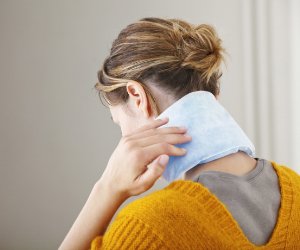Last Updated on March 13, 2019 by
What You Should Know is an ongoing series covering a range of informational topics relevant to current and future healthcare professionals.
Pain assessment and control is something which every doctor going into practice will have to face, regardless of his or her specialty. Pain is the number one reason why Americans seek out medical treatment in the first place and is estimated that some 50 million Americans suffer from some form of chronic pain – at a cost to the US health system of $100 billion a year. It is the leading cause of disability for Americans over the age of 45 and carries with it tremendous health and social costs to patients, their families and society as a whole.
As many new doctors quickly realize, however, pain assessment and control is challenging, to say the least. Pain is a complex, difficult-to-define process that unfortunately is part and parcel of many equally complex disease processes such as cancer, neuropathy or fibromyalgia. This can make pain assessment – and management – one of the most challenging aspects of medicine.
A Review of Different Techniques for Nonpharmacological Pain Control
There are many advantages to nonpharmacological pain control. To begin with, most of the techniques discussed below are cost effective and do not require expensive or sophisticated equipment, so they are within the means of even patients with low socioeconomic status. They often can be taught to patients and their families to help them feel more empowered when managing their particular disease process. Many of them can also provide fast relief from pain and discomfort, which cannot always be said of oral pain killers. Perhaps most importantly, none of them come with the risk of dependence or addiction or other unwanted side effects such as constipation or respiratory depression.
However, it must be said that some of these techniques carry with them a greater burden of clinical proof than others – and some are not used as frequently as they carry with them risks for negative patient outcomes. It is important for doctors to know which of these techniques is appropriate for patients, given their individual medical histories – and which ones have been proven to lack merit.
Breathing Exercises
Breathing exercises can help to improve pain by increasing oxygenation and the elimination of carbon dioxide and has long been used as a technique for easing the pain of women in labor. They also can work for painful situations such as transferring a patient from bed to a chair. The London Pain Clinic recommends techniques such as diaphragmatic breathing to help relaxation muscles whose tension can contribute to pain, especially for those patients with chronic painful conditions.
Massage
Therapeutic touch and massage is another good technique for reducing patient pain without the use of medications. Massage helps to reduce tension in the muscles – which in itself can be a major cause of pain – and activates large diameter fibers while inhibiting pain messages received by smaller fibers in the muscle. It has also been shown to stimulate the release of endorphins and to decrease patient’s sensitivity to pain. For instance, in one study of women with osteoarthritis of the knee who received traditional Chinese massage to the knee 3 times a week for 2 weeks showed a marked decrease in reported pain levels – as well as other more measurable outcomes including increased speed of gait and alleviation of stiffness, and increased step width among other markers.
Bed Rest
Although bed rest was once widely prescribed for a variety of conditions, is no longer widely advocated because of its harmful side effects, including shortening of muscular fibers and an increased risk for muscular atrophy and weakening of bones and joints. Apart from these musculoskeletal issues, the Wexner Medical Center notes that it can increase the risk for blood clots, depression, skin breakdown and changes in the blood sugar. In short, the risks of bed rest largely outweigh its benefits which is why this treatment is only rarely prescribed as a method of pain control.
Warm Applications
Warm applications can help with pain due to the fact that warmth acts as a vasodilator and increases blood flow to the area – and thus the ability of the body to heal from things like surgery or trauma. Warmth can also reduce pain associated with muscle spasms and relax smooth muscles in particular. Even for acute low back pain, research published in the journal Spine found that the application of heat has been clinically proven to reduce pain and stiffness, increase muscle flexibility and reduce disability stemming from this condition.
And while some forms of heat are only effective for relieving pain from sites at or near the body’s surface, techniques like ultrasound provide deeper heat and the ability to penetrate even to remote sites such as the hip joint, according to a study from the Archives of Physiological Medical Rehabilitation; researchers cautioned, however, that this type of therapy is contraindicated for patients with inflammatory conditions, as it may serve to only exacerbate the inflammatory response.
Cold Applications
Cold applications – also known as cryotherapy — work by different mechanisms than warm applications to reduce pain and promote patient comfort. Cold acts as a vasoconstrictor to reduce pain caused by inflammation or edema and is thought to have an effect that lasts longer than that of heat applications. According to one article published in the journal Orthopedics, cryotherapy also can reduce the temperature of the muscles by several degrees, which reduces the velocity of nerve conduction pain signals along the muscle spindles. It should be noted, however, that patients should be educated on how often and how long to use cold applications in order to avoid problems like tissue damage.
Positioning
This technique is so simple that it is sometimes overlooked, but simply repositioning a patient in bed and using pillows to support the patient can greatly help with patient comfort levels. Educating patients and caregivers on these simple techniques can be another great way of reducing pain with measures other than analgesics. One study, later published in the Hospice Journal, noted that because of its simplicity, the art of positioning is not always taught to caregivers and families but that it is easy to learn and teach, inexpensive, and carries low risk to the patient; the authors note that “taking time to introduce these techniques to patient and families often results in a significant contribution to the comfort of the dying patient”.
Exercise
Exercise and movement can also help to promote patient comfort. It increases blood flow and circulation and thus promotes healing; in the case of conditions like osteoarthritis, it can help to relieve the discomfort and stiffness of the joints. One reason appears to be psychological, such as in the case of one study which looked at the impact on exercise on patients with chronic lower back pain and found that it was able to improve mood, decrease depression and increase tolerance to pain. Another study found significant pain reductions in patients who underwent a multi-week therapy program composed of isometric and range of motion exercise.
TENS Units
Transcutaneous electrical nerve stimulation (TENS) units have been shown to be effective in treating a variety of painful conditions, including neck and back pain, but blocking the messages of pain sent to the central nervous system. However, there are drawbacks to this method of pain management, including the fact that it is costly and that compliance with its use is questionable. It appears to be most effective in combination with other treatment modalities, such as one study which found it to be an efficacious means of controlling pain in patients with acute cervical and lumbar spine injuries when used with range of motion and myofascial release techniques.
Distraction
Distraction is another very simple technique which, like positioning, can sometimes be overlooked as a means of pain control. Distraction can help because it shifts the attention and focus of a patient from pain to other stimuli in the environment and helps to lessen the intensity of a patient’s pain. However, distractions need to be in keeping with a patient’s interests and ability and need to be individually tailored to be truly effective. Television, crossword puzzles or other games, reading or visiting with family and friends can all provide needed distraction.
To sum up, pain is a complex phenomenon with a variety of causes and is something which is entirely unique to the individual. To due to the fact that many analgesics carry with them the risk for addiction and dependence as well as an array of lesser but still troubling symptoms like constipation, using these nonpharmacological measures can either replace the use of analgesics or at least reduce their need. However, a knowledge of these techniques is a prerequisite to patient and family education on these techniques to reduce pain and improve patient comfort and quality of life.
References
Anskell, M. H. et. al. Effects of Aerobic and Strength Training on Pain Tolerance, Pain Approach and Mood of Unfit Males as a Function of Pain Location. Journal of Sports Medicine. 1994. 12:535-547
Chen, H. Nonpharmacological Approaches to Treatment of Chronic Pain. Report to the Vermont
Legislature. 2014.
Diaphragmatic Breathing and Chronic Pain. The London Pain Clinic. 2015. http://www.londonpainclinic.com/resources/diaphragmatic-breathing-and-chronic-pain
Highland, T.R. et. al. Changes in the Isometric Strength and Range of Motion of the Isolated Cervical Spine after 8 Weeks of Clinical Rehabilitation. Spine. 1992 17: 72-82
Hou, C. R. et. al. Immediate Effects of Various Physical Therapy Modalities on Cervical Myofascial Pain and Trigger Point Sensitivity. Archives of Physiological Medical Rehabilitation. 2002 83(10): 1406-14
Lehman, J.F. Therapeutic Heat and Cold. Orthopedics. 1974. 99:207-245
Lehman, J.F. Comparative Study of Short-wave, Microwave and Ultrasonic Diathermy in Healing the Hip Joint. Archives of Physiological Medical Rehabilitation. 1959. 40: 510-512
McLaffrey, M. and Wolff, M. Pain Relief Using Cutaneous Modalities, Positioning and Movement. Hospice Journal. 1992. 8 (1-2):121-153
Nadler, S.F. Nonpharmacological Management of Pain. Journal of American Osteopathic Association. 2004 104:6-12
Nadler, S.F. et. al. Continuous Low-Level Heat Wrap Therapy Proves More Effective than Ibuprofen or Acetaminophen for Acute Low Back Pain. Spine. 2002. 27: 1012-1014
Nonpharmacological Interventions. Cancer Pain and Support Management Research Group. University of Illinois, Chicago, School of Nursing. 2014. http://www.tneel.uic.edu/tneel-ss/demo/comfort/frame5.asp
Quingguang, Z. et. al. Gait Analysis of Patients with Knee Osteoarthritis Before and After Chinese Massage. Journal of Traditional Chinese Medicine. 2015. 35(4) 411-416
The Dangers of Bed Rest. Wexner Medical Center, 2012 http://patienteducation.osumc.edu/Documents/dangerbr.pdf
Brian Wu, MD, Ph.D., MNM, graduated from the University of Maryland with a Bachelor’s of Science in Physiology and Neurobiology, and graduated from the Keck School of Medicine (University of Southern California) with an MD with a focus on holistic care and treatment. He currently holds a Ph.D. in integrative biology and disease for his research in exercise physiology and rehabilitation.


